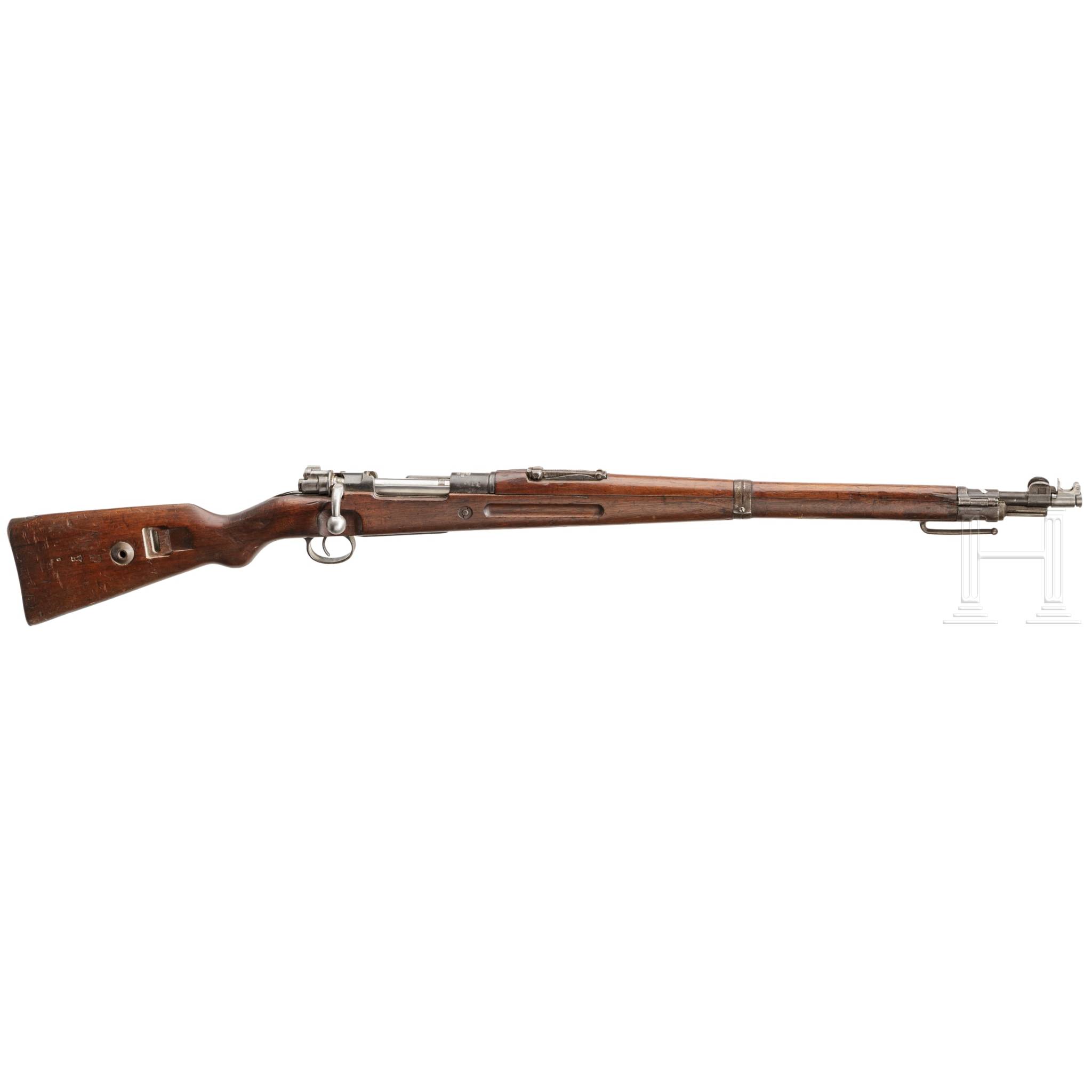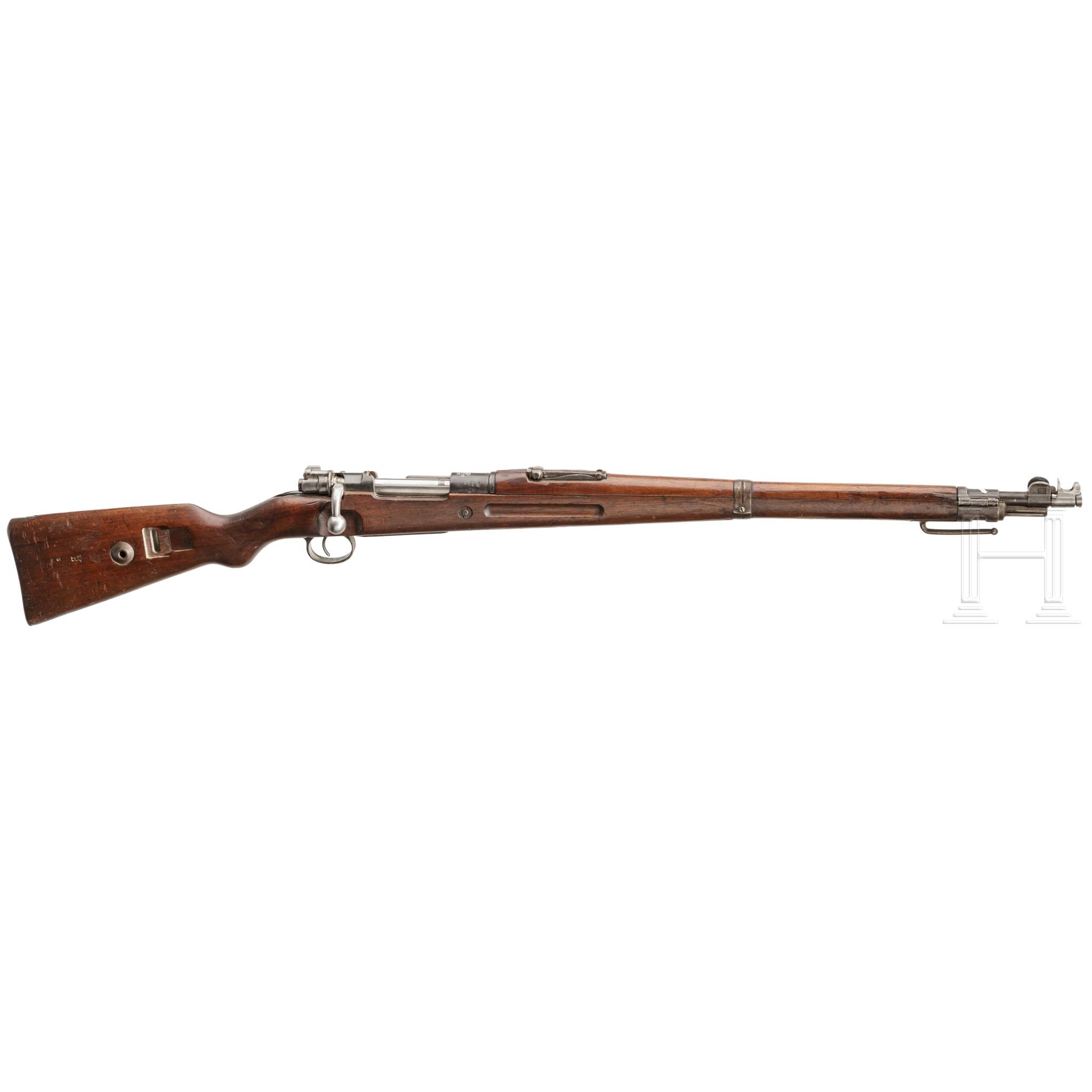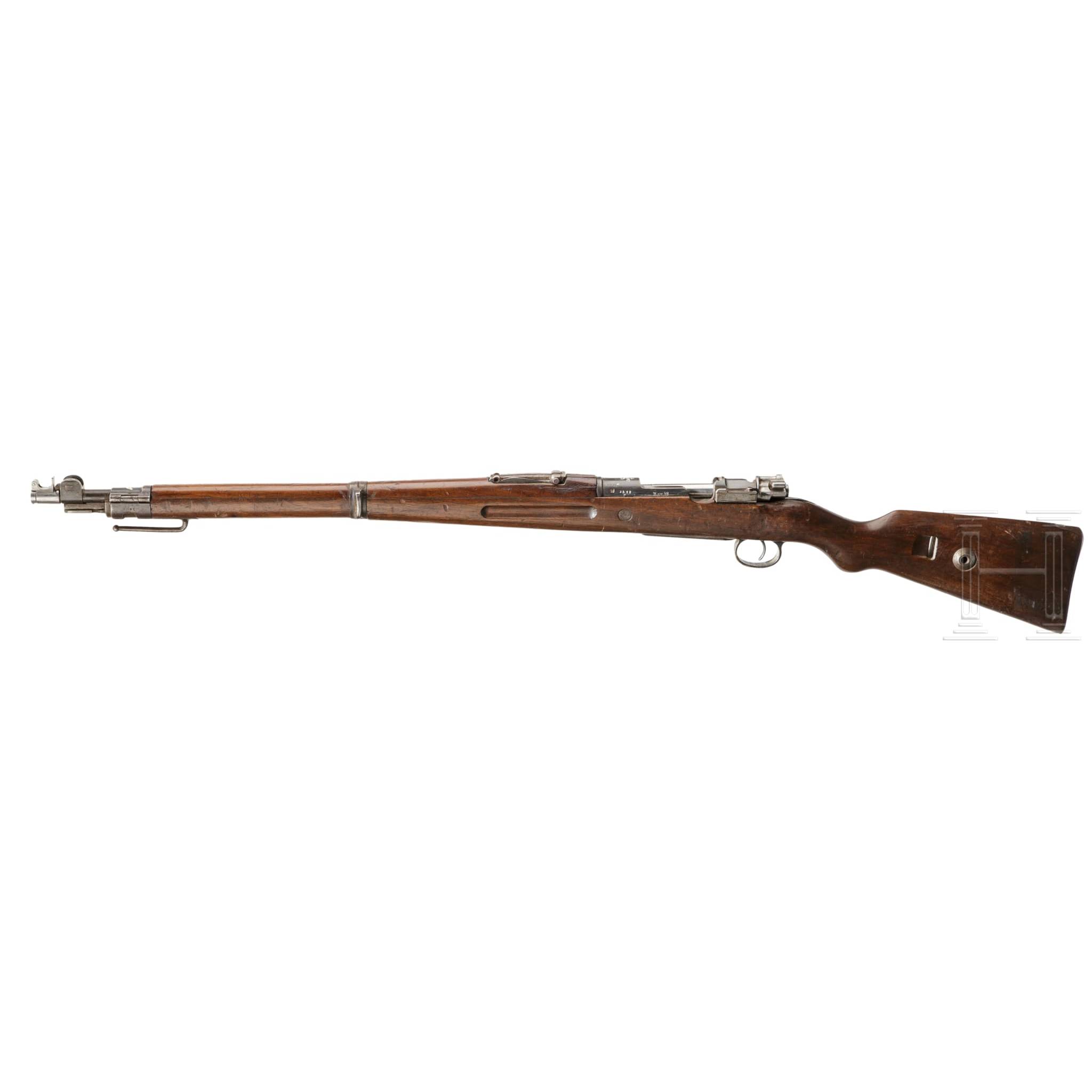Description
Original condition & all matching with factory muzzle cap!
Due in Australia soon from Germany where it has spent its entire life & offered for sale here is the daddy of the Kar98k, a Kar98a in original configuration & condition with no signs of restoration.
Trying to make sense of the Karabiner history can be tricky so here goes. Not to be confused with the later Karabiner 98k or the earlier Karabiner 98A (uppercase A), the Karabiner 98a (Kar 98a) was a shorter version of the Gewehr 98 originally made for cavalry & support unit use. The Karabiner 98A which was adopted in February 1902 had a considerably shorter barrel than the Gewehr 98 & was also lighter. Experiments in 1904 with Karabiner 98A carbines rechambered for the S Patrone cartridge showed excessive recoil & muzzle flash problems, leading to the suspension of production in 1905. The Gewehr Prufungs Kommission (GPK) started developing a new carbine with a longer barrel & a different stock to address these problems. By the mid-summer of 1907, the longer barrelled prototype carbines showed more acceptable recoil & muzzle blast behavior with the S Patrone cartridge.
In January 1908, the Karabiner Model 1898 AZ (Kar 98AZ) was accepted for service. The new features were a small diameter receiver ring, tapered rather than stepped barrel contour, an L-shaped stacking rod attached to the stock near the muzzle & a turned-down bolt handle with recess in the stock in the same fashion as the Gewehr 98s sniper variant (& later the Kar98k). The “AZ” stands for “Aufpflanz-und-Zusammensetzvorrichtung“, meaning “with bayonet attachment point & stacking rod”.
During World War I the Karabiner 98a was issued to light infantry, cavalry, mountain troops & later to assault troops. It was well liked because it was lighter & shorter than the Gewehr 98 & was thus better suited for use in trench assaults.
In 1923, the AZ was renamed to ‘a’, as Germany sought to distinguish the model from the newer ‘b’ & ‘k’ models.
After the Treaty of Versailles, Germany was limited in the numbers of rifles it was allowed to retain so required so cunningly, every 3rd police officer (or any other official) was allocated a carbine, which is what this is.
These are proving harder to find & becoming more desirable by collectors, especially in this original condition.
This carbine was manufactured in Danzig (still part of the Imperial German empire) in 1918, as marked in the receiver ring & all numbers match, including the bolt (correctly, still ‘in the white’). Those which were kept in service had an additional date placed on the receiver which this does not have, indicating this was secreted away post WW1 by Hans, Friedrich or Gunter (probably because of the social unrest of this period & the perceived lack of order) or, it may well have been used by the ‘Freikorps’ which were basically a paramilitary private army made up of WW1 veterans roaming the streets looking for Communists which were immensely popular in early 1920’s Germany which was a maelstrom of political violence & instability.
This would make an excellent addition to your Mauser or WW1 collection so don’t hesitate if this is for you.
Do your own research & you will know if this is for you. Please view the photos carefully & make your decision based on what you see as they form the main description & override all written information. These are all we have until it clears customs & if not sold before, we will post more.
We think we have described it accurately & correctly but do not claim to be infallible so if we have got anything wrong, it is unintentional & are happy for feedback from people who know more than we do.
Whilst we check these out for serviceability, the warranty has expired & this is sold on an ‘as is’ basis. As with all used guns, we recommend you have this checked by a suitably qualified person prior to shooting.
Call for shipping cost to your dealer.






